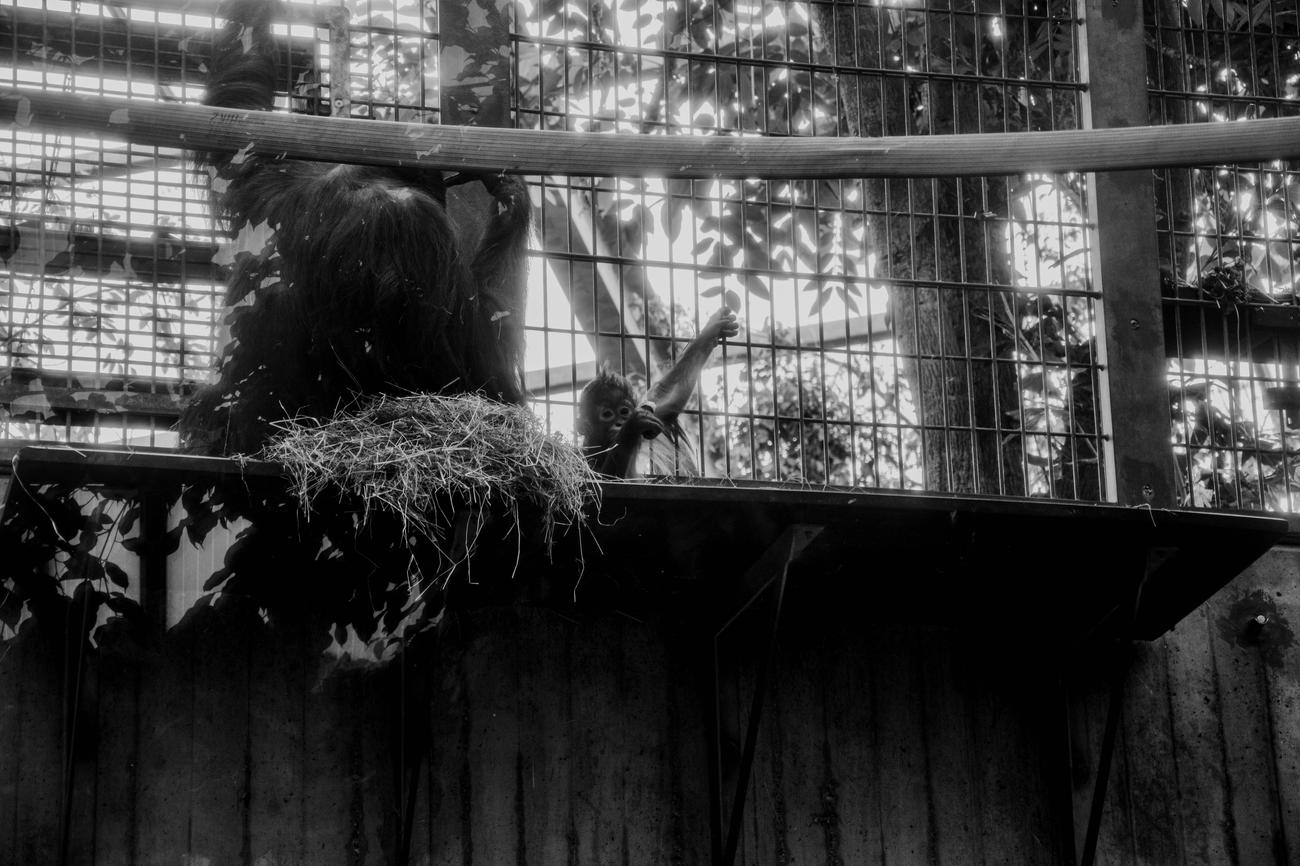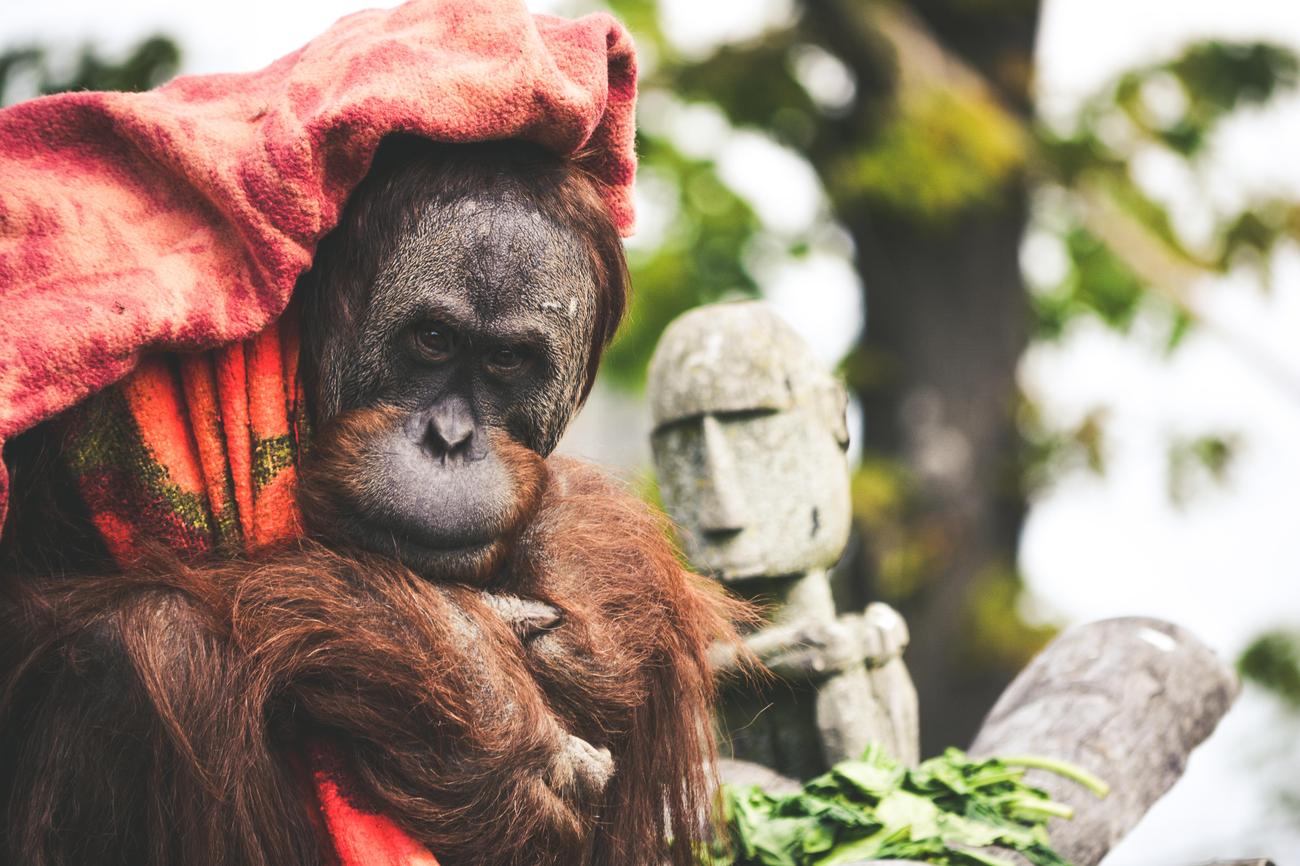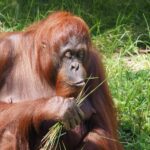If you’ve ever wondered what makes orangutans one of the most fascinating creatures on our planet, look no further. In this article, we’ll dive deep into the incredible world of these intelligent primates and unveil some awe-inspiring facts that will leave you in awe. From their remarkable behavioral patterns to their ecological significance, we’ll explore the hidden wonders of orangutans and shed light on the conservation challenges they face. Get ready to embark on a journey of discovery and be captivated by the cool facts about orangutans that will have you marveling at their magnificence and feeling inspired to protect their threatened habitats.

Cool Facts About Orangutans
Orangutans, those magnificent creatures that swing effortlessly through the trees of Southeast Asia, never cease to amaze with their intriguing characteristics and behaviors. Get ready to delve into the world of orangutans as we unveil some cool facts that will leave you awestruck.
Firstly, did you know that orangutans share an astonishing 97% of their DNA with humans? This genetic similarity not only emphasizes our evolutionary connection but also highlights their intelligence and ability to learn complex tasks. It’s truly fascinating to witness their problem-solving skills and their remarkable ability to use tools in the wild. As we observe them, their almost-human expressions evoke a sense of kinship and wonder.
Now, let’s talk species. There are three distinct species of orangutans: the Sumatran, Bornean, and Tapanuli orangutans. Each species is unique in its own right, with subtle variations in appearance, behavior, and habitat. Sadly, all three of these species are classified as critically endangered by the International Union for Conservation of Nature (IUCN). Their dwindling numbers serve as a stark reminder of the urgent need for conservation efforts to protect their habitats and ensure their survival.
Speaking of habitats, orangutans call the lush rainforests of Borneo and Sumatra home. As the largest tree-living mammals in the world, orangutans have perfectly adapted to this arboreal lifestyle. Their long, muscular arms (which are almost two times longer than their legs) and strong grasping hands enable them to effortlessly maneuver through the dense canopy. These towering giants spend their days exploring the treetops, seeking out their favorite food: fruit.
Orangutans have an incredibly diverse diet, feasting on over 300 different types of fruit. From juicy mangoes to sweet durians, their taste buds revel in the tropical flavors on offer. This reliance on fruit contributes to their role as seed dispersers and helps maintain the delicate balance of their forest ecosystems.
When it comes to communication, orangutans have devised a unique method of conveying their thoughts and intentions. Males, in particular, possess throat sacs that act as resonance chambers, amplifying their vocalizations across the forest. These deep, resonant calls serve as a means of establishing territories, attracting mates, and engaging in social communication. Imagine the symphony of sound echoing through the trees as these powerful calls resonate across the forest, nature’s own concert hall.
Now, let’s delve into the intriguing realm of orangutan reproduction. Male orangutans experience two stages of sexual maturity: the juvenile stage and the adult stage. During the juvenile stage, males develop what we can affectionately call “cheek pads” or “flanges.” These large, fleshy cheek pads are a visual indicator of their transformation into adulthood and serve as a sign of dominance. Additionally, during adulthood, they develop a throat pouch that adds to their striking physical appearance.
Lastly, we come to their feet, which are truly versatile tools in themselves. Orangutan feet are surprisingly dexterous, allowing them to grip branches and manipulate objects with precision. This hand-like adaptation enables them to perform incredible feats, such as cracking open tough nuts or fashioning comfortable leafy nests for resting. Their feet double as hands, showcasing the ingenious adaptability of these remarkable creatures.
In conclusion, orangutans are truly wonders of the natural world, captivating us with their unique characteristics and behaviors. From their close genetic resemblance to humans to their crucial role in maintaining the richness of their rainforest ecosystems, orangutans leave an indelible mark on our hearts and minds. By sharing their incredible stories, we hope to inspire a deep sense of admiration and a commitment to safeguarding their future.
As the great naturalist John Muir once said, “When we try to pick out anything by itself, we find it hitched to everything else in the universe.” Orangutans are intricately connected to nature’s delicate tapestry, and it is our responsibility to ensure their place in it. So let us cherish these cool facts about orangutans and embark on a journey to protect their magnificent species and the diverse habitats they call home.
Now, join me as we peel back the layers and uncover even more secret treasures of the orangutan’s world…
Orangutans, the incredible creatures that dwell in the lush rainforests of Southeast Asia, possess a myriad of interesting facts that will leave you in awe. Did you know that these fascinating primates have the ability to use tools? They skillfully fashion tools out of twigs and branches, employing them for various purposes. If you’re curious to delve deeper into the intriguing world of orangutans and uncover more captivating tidbits, click here to explore some of the most interesting facts about orangutans
Cool facts about orangutans like their intelligent behavior, fascinating social structure, and the alarming endangered status make them one of the most captivating species on our planet. These highly intelligent creatures exhibit a remarkable range of behaviors, from using tools to problem-solving. Did you know that orangutans have the ability to plan their actions up to two days in advance? This astonishing level of intelligence sets them apart from many other animals. To learn more about orangutans’ behavior, click here: orangutans behavior.
While their intelligence is impressive, it is also crucial to address the concerning issue of their endangered status. Habitat destruction and poaching have pushed orangutans to the brink of extinction. Understanding the impact of these threats on their future is essential. Find out more about the dire situation and how you can contribute to their conservation efforts by clicking on this link: endangered status of orangutans.
But orangutans are not just a species in need; they are extraordinary beings that deserve our admiration and protection. Their ability to grasp complex ideas, express emotions, and communicate with each other showcases their profound intelligence. Exploring the depths of their cognition and emotional complexity will leave you in awe. To delve into the world of their remarkable intelligence, click here: orangutans intelligence.
As we unravel the mysteries of orangutans’ behavior and intelligence, we come to appreciate the uniqueness and importance of these incredible animals. They serve as a poignant reminder of nature’s wonders and the urgent need to protect and preserve our world. Join us in celebrating and safeguarding the magnificent orangutans. Together, we can make a difference for their future.
Amazing Facts about Orangutans
[youtube v=”9kHQAbPR_04″]
Orangutans: The “Man of the Woods”
Orangutans, which means “man of the woods” in Malay, are fascinating creatures that inhabit the rainforests of Borneo and Sumatra. These intelligent primates are known for their remarkable adaptability and complex social structures. Let’s explore some amazing facts about orangutans and their unique characteristics.
Arboreal Lifestyle and Adaptations
With their long, muscular arms and strong hands, orangutans are perfectly suited for life in the trees. They navigate their forest habitats with ease, thanks to their exceptional climbing abilities. Their curved fingers and toes provide them with an enhanced grip, allowing them to move hand over hand and hold onto branches using their feet.
“Orangutans are wonders of the natural world, and their adaptability to the treetop environment is truly remarkable.”
A Diverse Diet and Feeding Habits
Orangutans are highly opportunistic feeders, consuming a wide variety of food types. While fruits make up the majority of their diet, they also include insects, young leaves, fungi, spider webs, and bird nests in their meals. A study published in 1988 revealed their feeding habits can vary greatly from month to month, depending on food availability in their surroundings.
“Orangutans exhibit incredible adaptability in their feeding habits, showcasing their ability to thrive in diverse environments.”
Complex Social Structure
While orangutans are primarily solitary animals, interactions between individuals, especially adult females, can occur. These interactions can range from friendly to more hostile encounters. However, male orangutans are generally aggressive towards one another. Researchers have identified two types of orangutans – resident and transient. Resident females live in territories within the larger range of a resident male, while transient individuals move alone over large areas until they establish their own home ranges.
“The complex social structure of orangutans highlights their unique dynamics and behaviors within their forest communities.”
Intelligence and Tool Use
Orangutans are renowned for their intelligence and problem-solving abilities. They have demonstrated their cognitive skills by using touch screens to play games and draw pictures, both in captivity and in the wild. Additionally, orangutans have been observed using tools to complete various tasks. They assemble toolkits and select different objects based on the specific task at hand.
“The intelligence and tool use exhibited by orangutans showcases their remarkable cognitive abilities and adaptability.”
Conservation Challenges and Palm Oil
The orangutan population faces numerous threats, with habitat destruction being one of the primary concerns. The extensive cultivation of palm oil has resulted in massive deforestation, destroying the rainforests that are vital for orangutan survival. Palm oil is present in many everyday products, contributing to its high demand. However, sustainable palm oil certified by the RSPO (Roundtable on Sustainable Palm Oil) can help protect rainforests while still meeting the market’s needs.
“Preserving orangutans and their habitats requires urgent action, and supporting sustainable palm oil can play a significant role in achieving that goal.”
A Plea for Conservation Efforts
Orangutans are incredible creatures that share 97% of their DNA with humans, highlighting their intelligence and similarity to us. With only around 55,000 wild orangutans remaining, efforts to protect and conserve their species are crucial. As we continue to learn more about these amazing animals, let’s work together to ensure their survival and safeguard their habitats for future generations.
“We have the power to make a difference and save these remarkable creatures. Let’s stand up for orangutans and commit to their conservation.”
In summary, orangutans are a true marvel of the natural world. Their adaptability, intelligence, and complex social structures make them a species worth protecting. With sustainable practices, education, and conservation efforts, we can secure a future where these incredible creatures continue to thrive in their forest homes.
FAQ
Question 1: Where are orangutans found?
Answer 1: Orangutans are only found in Southeast Asia, specifically in Borneo and Sumatra.
Question 2: How similar are orangutans to humans?
Answer 2: Orangutans share 97% of their DNA with humans.
Question 3: How many species of orangutans are there?
Answer 3: There are three species of orangutans: Sumatran, Bornean, and Tapanuli.
Question 4: What is the conservation status of orangutans?
Answer 4: Orangutans are critically endangered according to the IUCN.
Question 5: What are some interesting facts about orangutans?
Answer 5:
– Orangutans are the largest tree-living mammal in the world.
– Orangutans eat over 300 different kinds of fruit.
– Their arms are almost two times longer than their legs.
– Their throat sacs are used to communicate with other orangutans.
– Males go through two stages of sexual maturity.
– Their feet double as hands.
- Discover Long Black Pepper: Flavor & Health Benefits - April 25, 2025
- Shocking Twists: The Grownup Review: Unreliable Narration - April 25, 2025
- A Quiet Place Book vs Movie: A Deep Dive - April 25, 2025
















